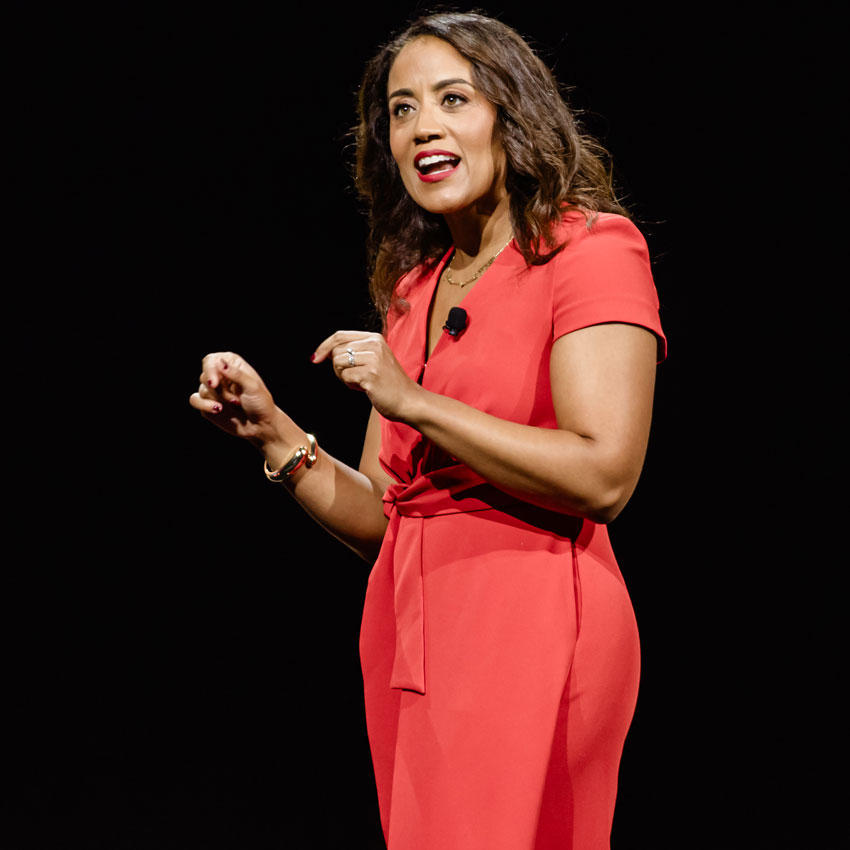What We Do
Elevate Your Production
Strategic Storytelling. Technically Seamless Production.
From big-picture creative concepts to the finest production details, we offer comprehensive services designed to bring your vision to life across Audio Visual, Production, Creative, Virtual + Hybrid Events.
Full-Service AV.
Built to Perform.
Bright AV delivers cutting-edge AV solutions, from audio and lighting to video and scenic design. With state-of-the-art gear and an expert technical team, we ensure every cue is executed with precision and every experience is built to perform.

Audio
Microphones • Media Playback • Audio Recording
Lighting
Decor Lighting • Moving Lights • Lighting Design • Wireless LED • Video Lighting • Rigging
Video
LED Video Walls • Projection • Video Mapping • Switching • Video Cameras Video Monitors • Live Streaming
Production That Delivers.
Our end-to-end planning and show management cover every detail, including workback schedules, logistics, run-of-show, speaker coordination, and vendor integration, so your event runs smoothly, on time, and with total confidence.

Show Management
Technical Specs • Cue to Cues • Talent Management • Scripting • Rehearsals
Content Mangement
Graphics Coordination • Content Development • Speaker Support • Voiceover and Audio Support
Venue Management
To-Scale CAD Drawings • 3D Renderings • Event Rigging Design • Internet Management
Purposeful Design. Storytelling That Captivates.
From theme development and visual design to custom video and presentation support, Bright AV delivers creative solutions that align with your goals and engage your audience. Whether you need full creative partnership or targeted support, we scale to meet your needs with purposeful storytelling and elevated design.
Brand & Theme Development
Event Identity and Naming Concepts • Logo Design • Stage Look and Scenic Direction • Presentation Template Design • Environmental Branding
Content Development
Speaker Deck Design and Development • Motion Design and Animation • Animated Walk-Ons and Interstitial Video Design • Video Production and Editing
Broadcast-Quality Production. Global Reach.
Bright AV delivers engaging virtual and hybrid experiences that extend your event’s impact far beyond the room. From livestream production and pre-recorded segments to interactive platforms and hybrid show design, we bring broadcast-level quality to every screen, ensuring your message connects with any audience, anywhere.

Scalable Content
Live Sessions • Pre-Recorded Sessions Simulive • On-Demand Sessions • Engagement Tools (Gamifications, Polling, Surveys, Q&As, Chat)
Reporting & Insights
Registration Integration • Session Tracking • Engagement Tracking • Sponsorship Tracking
Operational Support
Production & Technical Crew • Content Managers • Platform Support • Presenter Support • Attendee Helpdesk
Proven Process
Your Vision.
Expertly Delivered.
Exceptional events don’t happen by accident. Bright AV’s Proven Process ensures your goals, audience, and vision are at the center of everything we do, from the first conversation to the final applause.

01
Listen & Learn
We start by listening with intention. Our team digs into your event goals, audience profile, and overall vision to fully understand what success looks like.
02
define & design
We translate your goals into tailored AV concepts and brand-aligned visuals. Our team delivers a clear technical plan and estimated budget for a seamless production.
03
Confirm & collaborate
With the vision aligned, we finalize scope and deliverables, and assign your dedicated project team. A kickoff call brings all stakeholders together to align on roles, timelines, and next steps.
04
Plan & Produce
We lead a detailed pre-production process, holding weekly calls and content reviews, pushing creative development, building and coordinating AV, venue, and vendor logistics.
05
Execute & Elevate
On show day, we deliver seamless execution with real-time problem solving. From first cue to final fade, we ensure the show flows smoothly, stays on-brand, and exceeds expectations to elevate the experience for every attendee.
06
Reflect & Refine
After the event, we debrief to review what went well and where we can improve. We report feedback, lessons learned, and ideas for the future for even greater success next time.
CASE STUDIES
We Don’t Just Say It, We’ve Done It
Real Events. Real Results.
Molson Coors Distributors Convention
Quest Diagnostics Accelerate
PepsiCo US Foods Senior Management Meeting
Frito Lay National Sales Meeting
testimonials